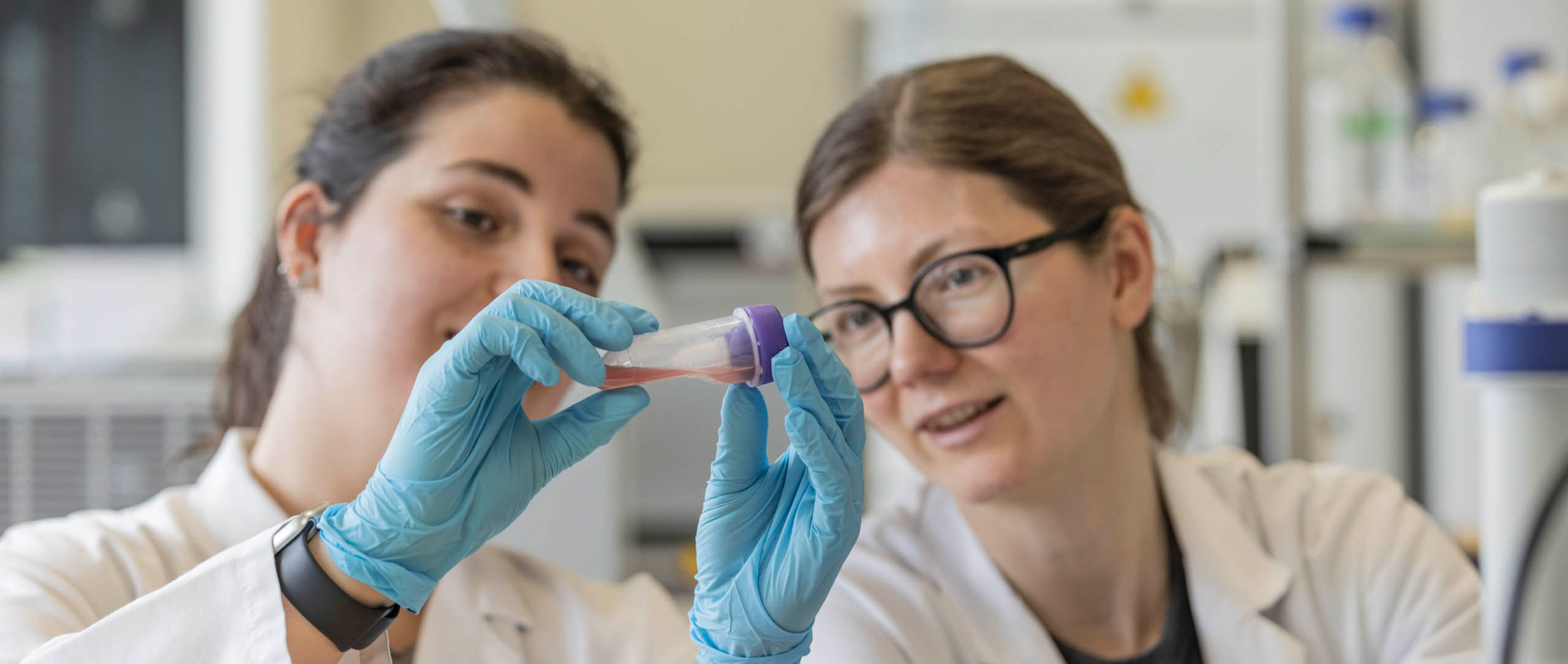
MUVON Therapeutics
From a handful to several hundred million muscles cells
Eleven years ago, in the very same lab where her research team is situated today, Deana Mohr investigated the efficacy, feasibility, and safety of the potential tissue engineering therapy for the regeneration of skeletal muscle that is now being administered to patients in a Phase 2 trial to treat stress urinary incontinence in women. She had previously studied cell and molecular biology and earned a PhD in radiopharmaceutical sciences at ETH Zurich where she enjoyed a fruitful collaboration with the Laboratory for Regenerative Medicine led by Daniel Eberli at the University of Zurich. It all worked out – the cells did what they were supposed to do. Two weeks before her defense, the project received the approval from Swissmedic for a first clinical trial and she then faced the decision whether to continue her research to the benefit of patients or to accept an offer to work in the pharmaceutical industry. As Deana does not like to leave a task unfinished, it is obvious which path she chose.
Deana Mohr established an European consortium with two industrial partners and two universities and applied for a HORIZON research project that she would coordinate. The European commission approved the 6.5 Mio. Euro grant, “and then the party started”, says Deana. Nine patients suffering from stress urinary incontinence have been treated in a Phase 1 clinical trial in 2020. The Phase 2 clinical trial started, thanks to the financial support of the WYSS Zurich Translational center, an accelerator of the ETH and the University of Zurich. The industrial partners supported the whole commercialization pathway and optimization of the process of product development. It was crucial to start working towards a commercially viable product early on in order to be able to scale up fast, as this personalized tissue engineering therapy is aimed at curing a large number of patients, waiting for too long for a safe and long-lasting cure for this disease.
Stress Urinary Incontinence is defined as the involuntary loss of urine upon increasing abdominal pressure due to coughing, sneezing, laughing, or exercising. It is mainly caused by a weakened or damaged pelvic floor musculature. Studies show that less than fifty percent of women can properly access the muscles on the pelvic floor to do the exercises that are required to regenerate them which is especially important after giving birth. Thus, physiotherapy only helps around half of all patients. Following this the only options are surgeries which involve the insertion of foreign synthetic materials into the body and might lead to serious complications. An estimated 200’000 patients fail physiotherapy every year in the US and Europe and do not or cannot undergo surgery. These end up suffering in silence greatly limiting their daily activities and social interactions which can lead to numerous comorbidities such as severe depression in certain cases.
And here is MUVON`s solution: During a 15–20-minute outpatient procedure, a biopsy is taken from the patient’s lower leg to obtain muscle tissue roughly the size of half a sugar cube. This is the most invasive aspect of the therapy. The cells are then extracted from the biopsy and placed in bio-incubators for multiplication, with bioreactors being prepared for scaling up. In the bio-incubators/bioreactors, human body parameters such as temperature and humidity are replicated to enable cell growth, resulting in a handful of cells multiplying to several hundred million in about a month. After this the cell derived product is injected into the sphincter muscle of the patient using a highly precise technique developed by the MUVON team.
The injected cells fuse with the damaged muscle fibers and then start rebuilding the muscle tissue through fiber regeneration. This results in a steady improvement in muscle function, volume, and patient quality of life. This process also replenishes the pool of cells in the muscle, increasing the likelihood of future tissue recovery. Initial long-term data indicates a stable recovery effect over a two-year period. Pivotal trials with larger patient numbers are necessary to acquire clinical data demonstrating efficacy and safety before marketing authorization can be obtained to sell the product to patients in Europe and the United States, which is expected to occur approximately 5-6 years from now.
MUVON Therapeutics derives its name from “muscle,” “volt,” and “on,” with “volt” referring to the stimulation and functional contraction of muscles, and “on” indicating the ability to switch on and go on with one’s life. The startup’s name reflects its mission to help patients move forward. The team at MUVON Therapeutics is already developing a therapy that can be used to treat other diseases. Once a scalable product that can be manufactured inexpensively is developed, it can be easily adapted to treat other skeletal muscle tissues with minimal modifications.